Noita Review – Falling Sand Reaches New Heights
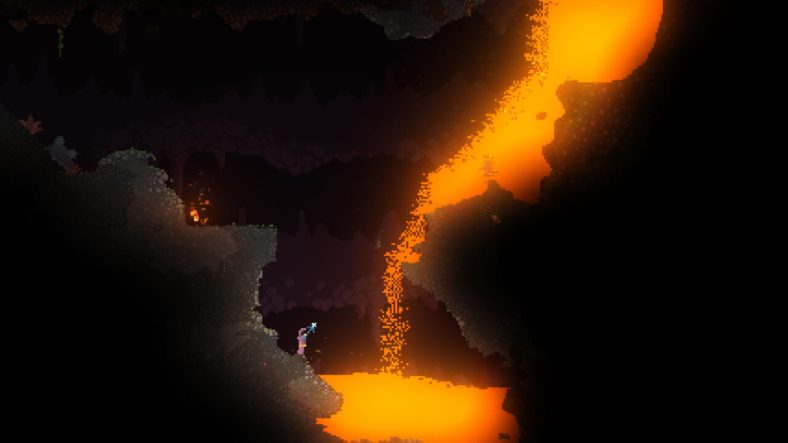
Developed and published by Nolla Games
Available on PC
MSRP $15.99
Early aughts internet nomads may remember a genre of games simply called Falling Sand. It was a sort of rudimentary simulation of different materials you could spawn in and see how they react. Each of the simulated particles could interact with one another, creating a game that was a mix of MSPaint and Pocket God. But what Falling Sand games lacked was purpose. Sure, a literal sandbox game is cool, but wouldn’t it be more fun to have some kind of gameplay? Noita by Nolla Games has spent years attempting this, and the result is incredible.
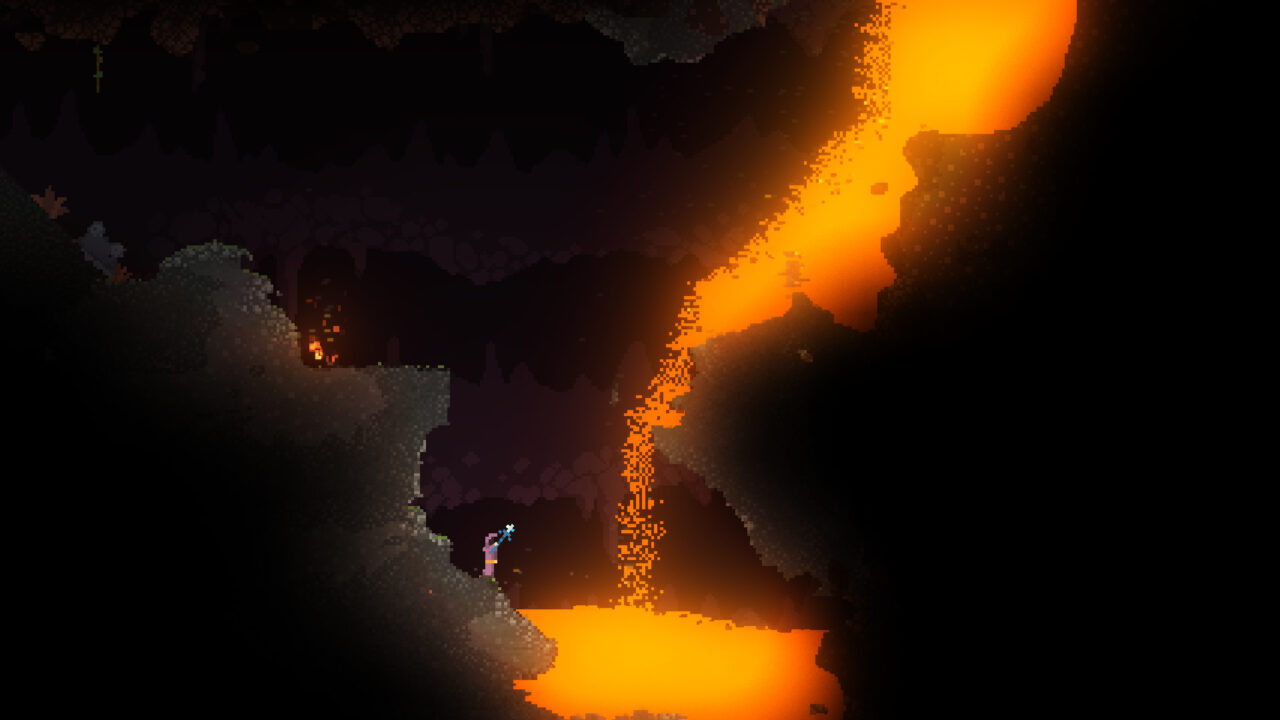
Noita begins with a totally baffling intro scene. At least, baffling to people who are not Scandinavian, I would assume. It begins with pictures in the night sky showing us Kalevala, the Finnish story of creation. We see a cosmic goose lay three cosmic eggs. Of these are born a pyramid cloaked in miasma, a storm raining diamond shaped ice, and what appears to be the alien robot from War of the Worlds. I wouldn’t think too hard about it.
I don’t know shit about fuck when it comes to to Norse mythology. Which is fine. The real premise comes from the games title itself. Noita means witch. The noita you play as in Noita seems to have one goal: to reach the bottom of a mysterious cave. Armed with two magic wands—one of which casts a magic bolt, the other casts “bomb”—you descend into the unknown.
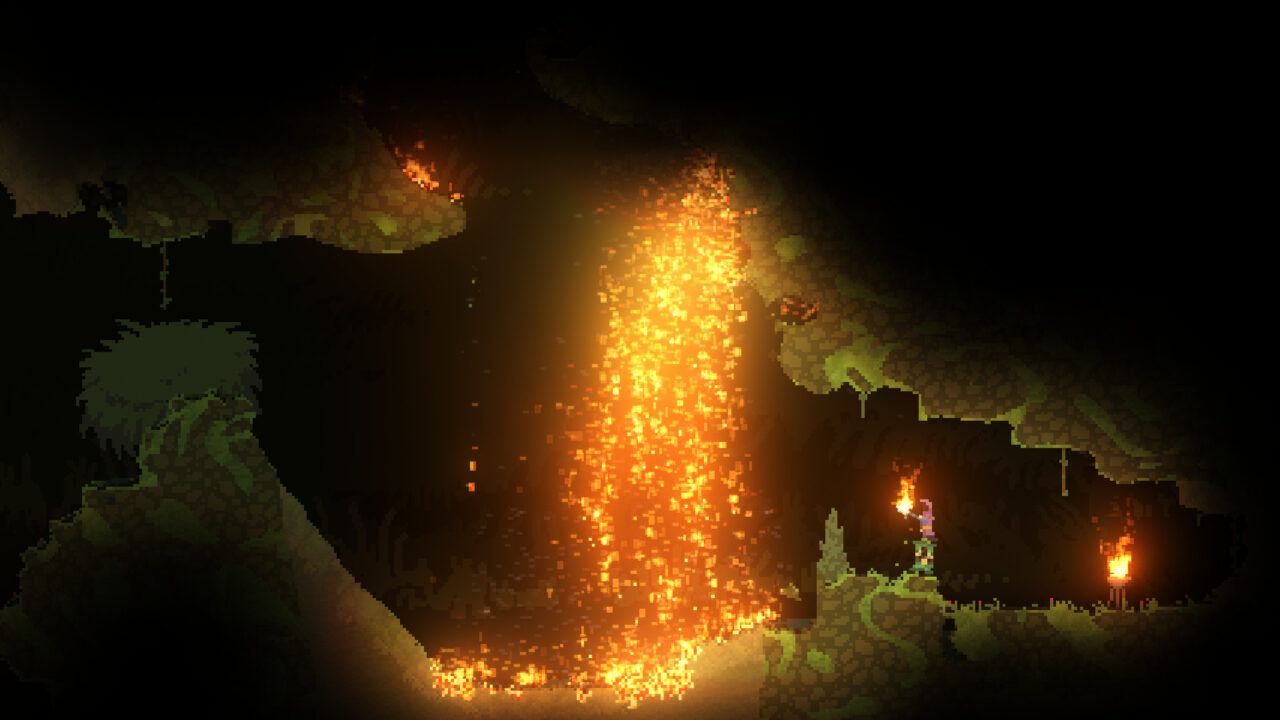
There is one more element of the Noita premise which is interesting. However, this is a bit of a spoiler. If you’re looking for an organic experience, I’d skip to the next paragraph. One curveball in the Noita setting is the weaponry the enemies use. One would think they’d exclusively use axes or spears or bows. But even on the first level of the cave, you encounter foes who use shotguns. The technology only continues to improve the further down you go, and soon you encounter enemies with jetpacks, sniper rifles, and more.
The main feature Noita brags about is that “every pixel is physically simulated.” That means that each dot rendered on screen is its own individual object composed of a substance, with specific properties. It’s kind of like the earth in Terraria, taken to the extreme. Entirely destructible, but you lack the power to continually destroy. Rather than mining it, you have to learn how it works and navigate it.
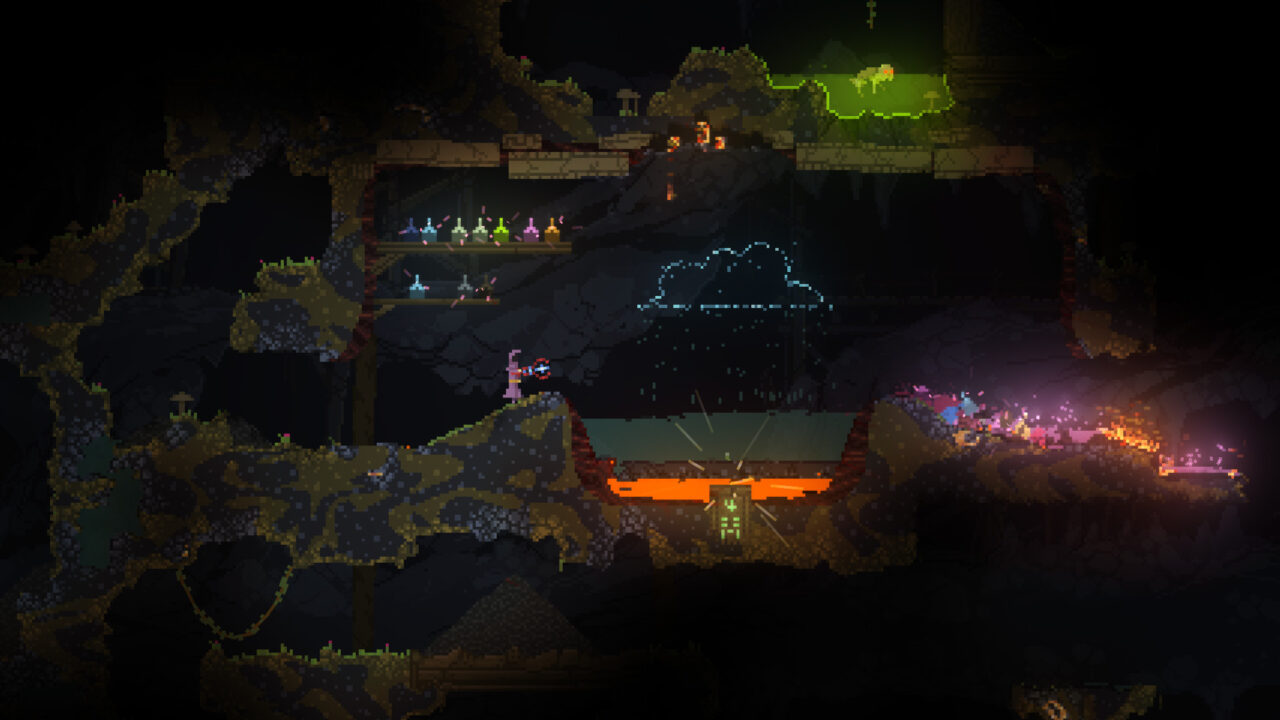
And learning how the elements interact is crucial for survival in Noita. Each element has its own sort of chemical properties, which can be used to your advantage. Rocks hard to break, but can melt from acid. Toxic sludge can be neutralized with water. Lava can be walked on by spraying a liquid on its surface. And so on. Understanding the environment is key to survival, and occasionally you find yourself utilizing the elements together for wide scale alchemy on the fly.
This may seem like industry standard for games like this, but Noita is a mile ahead of the rest. Part of it comes from the environment full of so many ridiculous objects and structures scattered about. I doubt you’d find a 50’ tall tank of whiskey in Terraria, nor could you kick out the bottom and send it flooding down a passage while you ignite it with a nearby lantern. And the further you go down, the more volatile and abnormal the mixtures become.
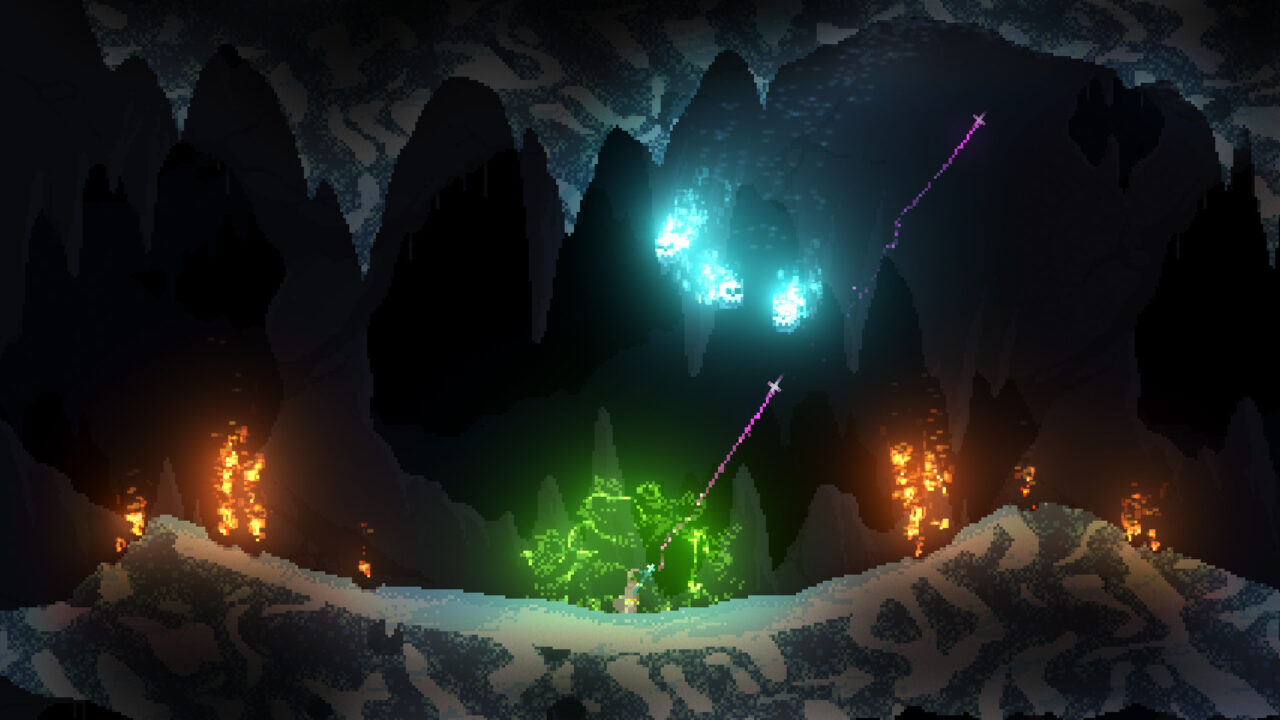
As stated, the gameplay for Noita is about getting to the bottom of the cave in one piece. You must pass through a handful of increasingly dangerous zones to do so. The cave is full with all manner of nasties, be it flying slimes, ghouls, gremlins, and more. Not to mention the environmental dangers such as toxic sludge or massive piles of gunpowder.
But unlike games such as Speluky, you have considerably more mobility in Noita. The witch has the inherent ability to fly a short distance. Functionally, a magic jetpack. This opens up way more possibilities when it comes to exploration, as you won’t necessarily be stopped by a cavern or lava pool or even fall damage.
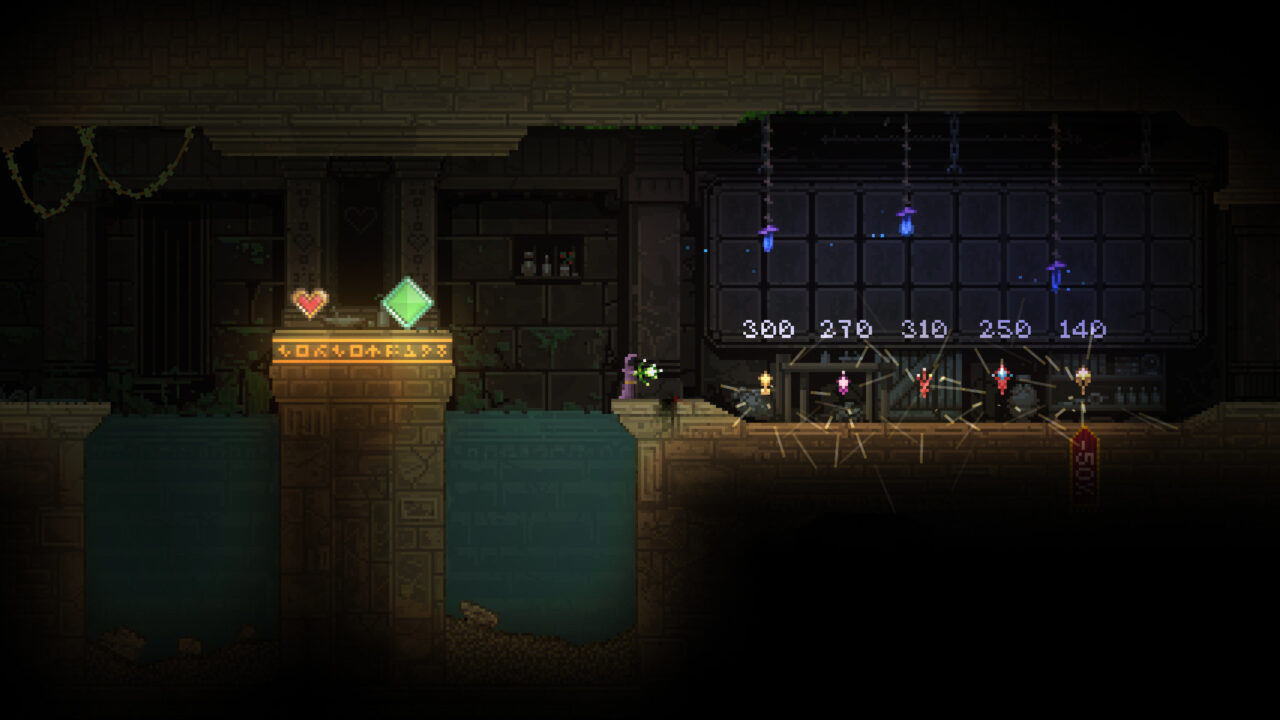
Also throughout the cave are various potions, wands, useful artifacts and more, which are critical for succeeding in your journey. Artifacts can have different properties. One gives off extreme heat and can evaporate pools of water, another warps gravity. The dozens of potion types too have all kinds of cool effects—jar of acid, bottle of berserker juice etc—but the real meat and potatoes of Noita are the wands.
Wands in Noita are the primary weapon. As you descend, you find different wands with different spells. The wands themselves have various stats, each has a mana bar and fire rate for example, and there are dozens of spells and spell mods. Between each level you can mix and match wands and spells to create truly devastating results, both for enemies and often yourself. You may be able to shoot exploding fireballs, or a black hole that eats everything in its path. Or spawn in a little rain cloud to clear away some lava. The most daring spell of all launches a massive saw blade that boomerangs back to you.
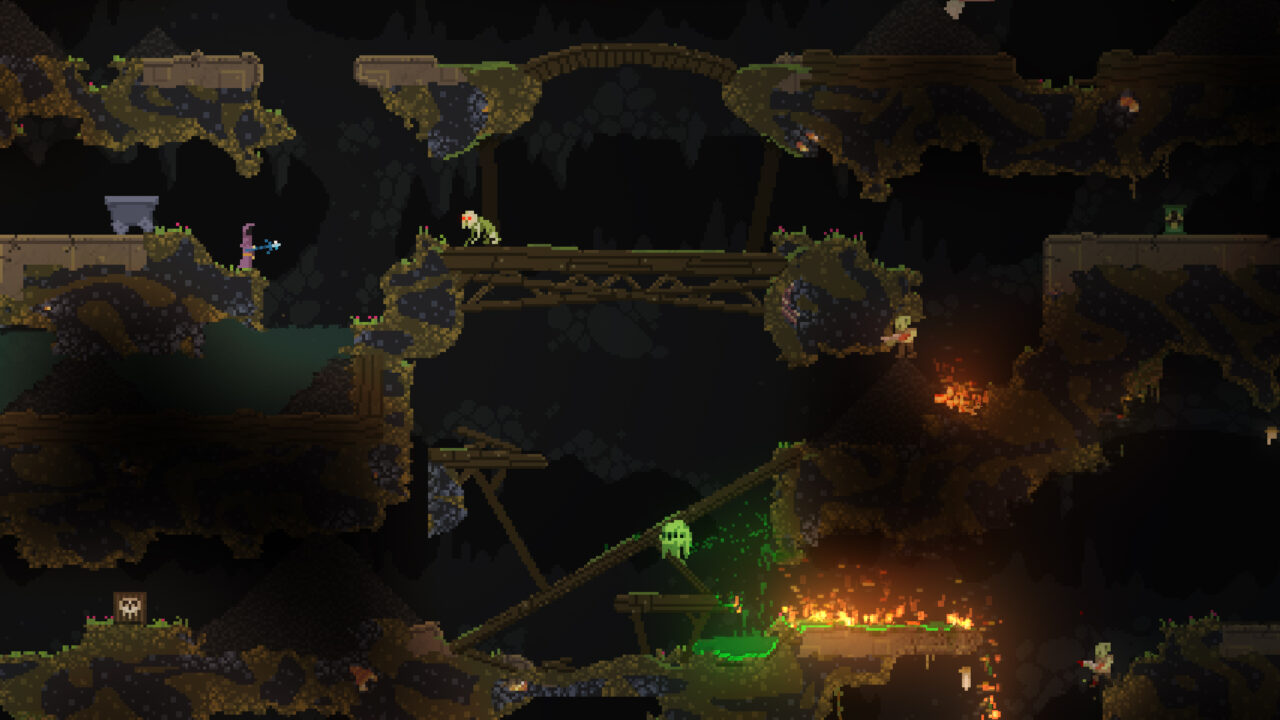
Learning the best combinations of these is one of the main reasons that Noita is so replayable. Wouldn’t that massive saw blade be more interesting if it could leave a trail of acid where it flies? Or how about a fireball that homes in on enemies? Much like roguelite such as The Binding of Isaac, synergy is critical for the fun. Noita pulls this off very well.
Noita really is the incredible synthesis of Falling Sand and contemporary roguelite games. It’s certainly far from perfect, as is every game with RNG. No doubt you will be frustrated when a good wand doesn’t spawn fast enough or the enemies gang up on you a little too efficiently. But this is no worse than any other games of the same genre. Noita is clearly a labor of love, and now that it’s out of early access, I say it’s well worth the money.
Categorized:Reviews

